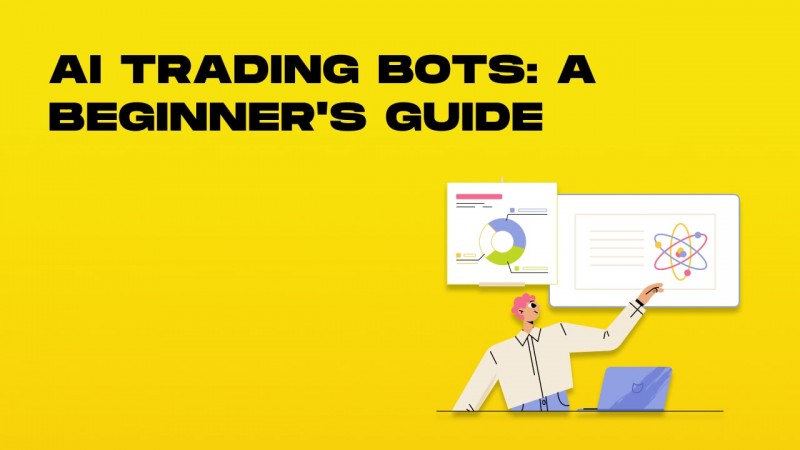20 Free Info On Selecting AI Stock Predictions Platform Websites
20 Free Info On Selecting AI Stock Predictions Platform Websites
Blog Article
Top 10 Tips For Assessing The Market Coverage Of Ai Platform For Predicting And Analyzing Stocks
Market coverage is one of the most important aspects to be considered when evaluating AI-powered trading platforms. It determines the number of markets and assets can be accessed. Market coverage is essential as it lets you diversify, explore the world's markets, and adjust to different strategies for trading. Here are the top ten tips to determine the market coverage of these platforms.
1. Evaluate Supported Asset Classes
Stocks: Make sure that the platform contains stocks from the top stock exchanges, including NYSE, NASDAQ and LSE.
ETFs: Check if the platform supports a wide range of ETFs for diversified exposure to regions, sectors or themes.
Futures and options. Check if the platform is able to handle derivatives, such as options, futures, and other instruments leveraged.
Forex and commodities: Check whether the platform is compatible with forex pairs, precious-metals, agricultural products, energy commodities, and other commodities.
Cryptocurrencies - Check to see if your platform supports the major copyright like Bitcoin, Ethereum and altcoins.
2. Verify the coverage area
Global markets. Your platform should cover the most important global markets, such as North America Europe Asia-Pacific and emerging markets.
Regional focus Verify that the platform specializes on specific regions or markets that coincide with your trading interests.
Local exchanges: Find out whether the platform supports regional or local exchanges that are relevant to your specific location or plan.
3. Assessment Real-time against. Data that is delayed
Real-time Market Data: The system needs to provide real-time trading data that allows for quick decision-making.
Data that has been delayed: Check if delayed data are available for free or at a discounted price that could be sufficient for investors with a long-term view.
Data latency: Determine whether the platform reduces the latency of real-time data feeds, particularly for high-frequency trading.
4. Review the Historical Data available
Historical data depth: Verify that the platform has ample data (e.g. more than 10 years old) for backtesting.
Examine the precision in historical data.
Corporate actions: Verify if historical data accounts for dividends, stock splits, and other corporate actions.
5. Review for market depth and order information
Platform should provide Level 2 Data (order-book depth) to help improve price detection and execution.
Bid-ask spreads: Check if the platform is displaying real-time bid spreads to ensure exact prices.
Volume data: Verify if the platform provides detailed volume data for analyzing liquidity and market activity.
6. Assess Coverage to determine Indices and Sectors
Major indices: Make sure the platform is able to handle major indices (e.g., S&P 500, NASDAQ 100, FTSE 100) to benchmark and index-based strategies.
Data specific to a sector to provide targeted analysis, make sure the platform has data specific to a specific sector (e.g. technology, healthcare, or energy).
Customized indexes. Make sure that the platform has the capability to track or build custom indices that satisfy your criteria.
7. Assess the impact of integration with News and Sentiment
News feeds: Make sure that the platform incorporates real-time feeds of news from reputable sources, such as Bloomberg and Reuters, for market-moving event.
Use the sentiment analysis tool on the platform using data from news, social media or other sources.
Event-driven strategy: Verify that the platform is compatible with event driven trading strategies (e.g. announcements of earnings economic reports).
8. Make sure you have Multi-Market Trading Capabilities
Cross-market trading: Make sure the platform supports trading on multiple asset classes, markets and exchanges from one interface.
Currency conversion: Verify that the platform supports multicurrency accounts as well as the conversion of currencies for trading internationally.
Support for different time zones: Make sure the platform supports trading on global markets in different time zones.
9. Examine Alternative Data Sources
Find alternative sources of data.
ESG data: Verify if the platform includes environmental, social, and governance (ESG) data for socially responsible investment.
Macroeconomic Data: Ensure that the platform has macroeconomic indicators, such as inflation, GDP and interest rates.
Review customer feedback and market Reputation
User feedback: Use user feedback to evaluate the reliability of the platform and market coverage.
Reputation in the industry: Check whether the platform is approved by industry experts for its market coverage.
Testimonials and case studies: These will highlight the platform's performance in certain markets or classes of assets.
Bonus Tips
Trial period: Try the platform at no cost to test how it covers the market and what information is available.
API access: Verify if the platform's API allows accessing market data programmatically to create custom analysis.
Customer Support: Verify that the platform can assist with any data-related or market-related problems.
By using these tips you can accurately assess the coverage of AI analysis and stock prediction platforms. You can then choose the trading platform that gives you the markets and the necessary information to be successful in your trades. A comprehensive market coverage allows you to diversify your portfolio and discover your portfolio. It also allows you to adapt to market changes. Read the most popular ai for investment blog for blog examples including ai for stock trading, ai for trading, ai trading, ai stock market, ai trade, ai stock trading bot free, chart ai trading assistant, investment ai, ai stock, market ai and more.
Top 10 Tips For Evaluating The Updates And Maintenance Of Ai Stock Predicting/Analyzing Platforms
The regular updates and maintenance of AI stock prediction and trading platforms are essential to ensure they remain effective, safe and in sync with the changing market conditions. Here are the top 10 tips to analyze their update and maintenance practices:
1. Updates Frequency
See when updates are released (e.g. each week, monthly or quarterly).
Why? Regular updates demonstrate the active development of the company and its ability to react to market shifts.
2. Transparency in Release notes
TIP: Go through the release notes on your platform to get information about any updates or changes.
Why? Transparent Release Notes reflect the platform’s commitment for continuous advancement.
3. AI Model Retraining Schedule
Ask the AI model how often it is retrained.
Why: Because markets are constantly changing and evolving, it is essential to update models in order to ensure they remain accurate and relevant.
4. Correction of bugs and issues
Tips - Check how quickly the platform resolves bugs and technical issues.
The reason is that prompt corrections to bugs will ensure the platform remains efficient and stable.
5. Updates on Security
TIP: Check if the platform updates regularly its security protocol to secure the user's data.
The reason: Cybersecurity on financial platforms is essential to prevent fraud and breaches.
6. Incorporating New Features
Tip: Check if the platform introduces new functions (e.g., advanced analytics, or new data sources) Based on feedback from users or market trends.
The reason: Feature updates show creativity and responsiveness to user needs.
7. Backward compatibility
Tip : Make sure updates don't interfere with existing functionality or require major configuration.
Why is that? Backward compatibility is crucial to ensure smooth user interface transitions.
8. Communication between Maintenance and the User Personnel
Learn how your platform informs users of scheduled maintenance and downtime.
Why? Clear communication builds trust and reduces the chance of disruptions.
9. Performance Monitoring and Optimization
Tip: Make sure the platform monitors and optimizes performance metrics of the system (e.g. accuracy, latency).
Why is continuous optimization necessary to ensure the platform's efficiency.
10. Compliance with Regulatory Changes
Tips: Find out whether the platform has new options or policies that conform with regulations governing financial transactions and data privacy laws.
What's the reason? Conformity with the regulatory requirements is essential to ensure the trust of users and to minimize legal risks.
Bonus Tip User Feedback Integration
Find out whether the platform integrates feedback from its users in its update and maintenance processes. This indicates a user-centric attitude and resolute commitment to enhancements.
When you look at the above factors, you will be able to assess whether or you are able to determine whether or AI trading and stock forecasting system you select is well maintained, current and able to adapt to changes in the market. Follow the most popular best ai penny stocks for blog info including trading ai tool, best ai stock prediction, best ai stock prediction, ai share trading, best ai stocks to buy now, ai stock trader, ai stock investing, best ai trading platform, ai trading tool, can ai predict stock market and more.